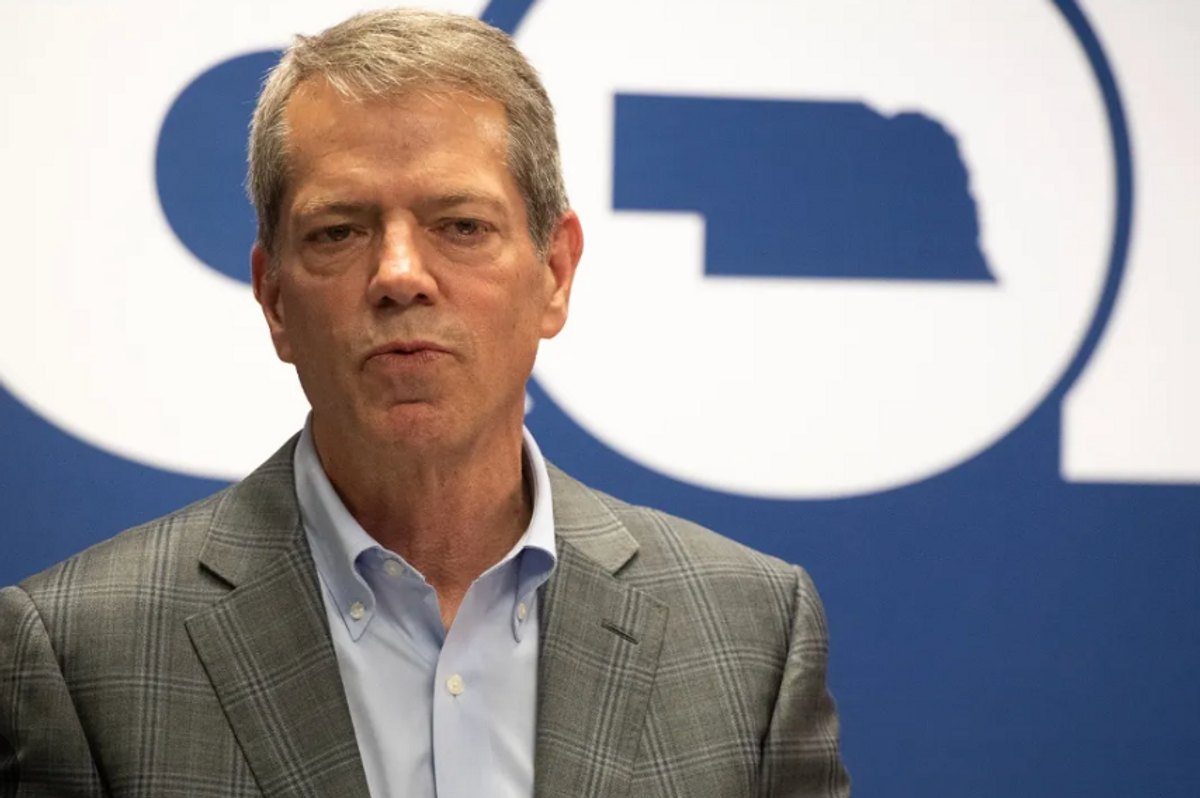Weekend Reader: The Price Of Inequality: How Today’s Divided Society Endangers Our Future

This week, Weekend Reader brings you an excerpt from The Price of Inequality: How Today’s Divided Society Endangers Our Futureby former World Bank Chief Economist Joseph E. Stiglitz. Stiglitz details the disparity between the top 1 percent who hold 40 percent of the country’s wealth and the remaining 99 percent of Americans, as well as the damaging policies put in place by elected officials that have and will continue to stunt growth and increase inequality.
You can purchase the book here.
The Rising Tide That Didn’t Lift All Boats
Although the United States has always been a capitalist country, our inequality—or at least its current high level—is new. Some thirty years ago, the top 1 percent of income earners received only 12 percent of the nation’s income. That level of inequality should itself have been unacceptable; but since then the disparity has grown dramatically, so that by 2007 the average after-tax income of the top 1 percent had reached $1.3 million, but that of the bottom 20 percent amounted to only $17,800. The top 1 percent get in one week 40 percent more than the bottom fifth receive in a year; the top 0.1 percent received in a day and a half about what the bottom 90 percent received in a year; and the richest 20 percent of income earners earn in total after tax more than the bottom 80 percent combined.
For thirty years after World War II, America grew together—with growth in income in every segment, but with those at the bottom growing faster than those at the top. The country’s fight for survival brought a new sense of unity, and that led to policies, like the GI Bill, that helped bring the country even closer together.
But for the past thirty years, we’ve become increasingly a nation divided; not only has the top been growing the fastest, but the bottom has actually been declining. (It hasn’t been a relentless pattern—in the 1990s, for a while, those at the bottom and in the middle did better. But then, as we’ve seen, beginning around 2000, inequality grew at an even more rapid pace.)
The last time inequality approached the alarming level we see today was in the years before the Great Depression. The economic instability we saw then and the instability we have seen more recently are closely related to this growing inequality, as I’ll explain in chapter 4.
How we explain these patterns, the ebb and flow of inequality, is the subject of chapters 2 and 3. For now, we simply note that the marked reduction in inequality in the period between 1950 and 1970, was due partly to developments in the markets but even more to government policies, such as the increased access to higher education provided by the GI Bill and the highly progressive tax system enacted during World War II. In the years after the “Reagan revolution,” by contrast, the divide in market incomes increased and, ironically, at the same time government initiatives designed to temper the inequities of the marketplace were dismantled, taxes at the top were lowered and social programs were cut back.
Market forces—the laws of supply and demand—of course inevitably play some role in determining the extent of economic inequality. But those forces are at play in other advanced industrial countries as well. Even before the burst in inequality that marked the first decade of this century, the United States already had more inequality and less income mobility than practically every country in Europe, as well as Australia and Canada.
The trends in inequality can be reversed. A few other countries have managed to do so. Brazil has had one of the highest levels of inequality in the world—but in the 1990s, it realized the perils, in terms both of social and political divisiveness and of long-term economic growth. The result was a political consensus across society that something had to be done. Under President Fernando Henrique Cardoso, there were massive increases in education expenditures, including for the poor. Under President Luiz Inácio Lula da Silva, there were social expenditures to reduce hunger and poverty. Inequality was reduced, growth increased, and society became more stable. Brazil still has more inequality than the United States, but while Brazil has been striving, rather successfully, to improve the plight of the poor and reduce gaps in income between rich and poor, America has allowed inequality to grow and poverty to increase.
Worse still, as we will show, government policies have been central to the creation of inequality in the United States. If we are to reverse these trends in inequality, we will have to reverse some of the policies that have helped make America the most economically divided developed country and, beyond that, to take further actions to lessen the inequalities that arise on their own from market forces.
Some defenders of the current level of inequality claim that although it’s not inevitable, doing anything about it would be just too costly. They believe that for capitalism to work its wonders, high inequality is an inevitable, even necessary feature of the economy. After all, those who work hard should be rewarded, and have to be, if they are to make the efforts and the investments from which all benefit. Some inequality is indeed inevitable. Some individuals will work harder and longer than others, and any well-functioning economic system has to reward them for these efforts. But this book shows that both the magnitude of America’s inequality today and the way it is generated actually undermine growth and impair efficiency. Part of the reason for this is that much of America’s inequality is the result of market distortions, with incentives directed not at creating new wealth but at taking it from others. It is thus not surprising that our growth has been stronger in periods in which inequality has been lower and in which we have been growing together. This was true not only in the decades after World War II but, even in more recent times, in the 1990s.
Trickle-down economics
Inequality’s apologists—and they are many—argue to the contrary that giving more money to the top will benefit everyone, partly because it would lead to more growth. This is an idea called trickle-down economics. It has a long pedigree—and has long been discredited. As we’ve seen, higher inequality has not led to more growth, and most Americans have actually seen their incomes sink or stagnate. What America has been experiencing in recent years is the opposite of trickle-down economics: the riches accruing to the top have come at the expense of those down below.
One can think of what’s been happening in terms of slices of a pie. If the pie were equally divided, everyone would get a slice of the same size, so the top 1 percent would get 1 percent of the pie. In fact, they get a very big slice, about a fifth of the entire pie. But that means everyone else gets a smaller slice.
Now, those who believe in trickle-down economics call this the politics of envy. One should look not at the relative size of the slices but at the absolute size. Giving more to the rich leads to a larger pie, so though the poor and middle get a smaller share of the pie, the piece of pie they get is enlarged. I wish that were so, but it’s not. In fact, it’s the opposite: as we noted, in the period of increasing inequality, growth has been slower—and the size of the slice given to most Americans has been diminishing.
Young men (aged twenty-five to thirty-four) who are less educated have an even harder time; those who have only graduated from high school have seen their real incomes decline by more than a quarter in the last twenty-five years.But even households of individuals with a bachelor’s degree or higher have not done well—their median income (adjusted for inflation) fell by a tenth from 2000 to 2010. (Median income is the income such that half have an income greater than that number, half less.)
We’ll show later that whereas trickle-down economics doesn’t work, trickle-up economics may: all—even those at the top—could benefit by giving more to those at the bottom and the middle.
A snapshot of America’s inequality
The simple story of America is this: the rich are getting richer, the richest of the rich are getting still richer,the poor are becoming poorer and more numerous, and the middle class is being hollowed out. The incomes of the middle class are stagnating or falling, and the difference between them and the truly rich is increasing.
Disparities in household income are related to disparities in wages and in wealth and income from capital—and inequality in both is increasing. Just as overall inequality has been growing, so have inequalities in wages and salaries. For instance, over the last three decades those with low wages (in the bottom 90 percent) have seen a growth of only around 15 percent in their wages, while those in the top 1 percent have seen an increase of almost 150 percent and the top 0.1 percent of more than 300 percent.
Meanwhile, changes in the wealth picture are even more dramatic. For the quarter century before the crisis, while everyone was getting wealthier, the rich were getting wealthier at a more rapid pace. As we noted, however, much of the wealth of the bottom and the middle, resting on the value of their homes, was phantom wealth—based on bubble housing prices—and while everyone lost out in the midst of the crisis, those at the top quickly recovered, but the bottom and middle did not. Even after the wealthy lost some of their wealth as stock prices declined in the Great Recession, the wealthiest 1 percent of households had 225 times the wealth of the typical American, almost double the ratio in 1962 or 1983.
Excerpted from The Price of Inequality: How Today’s Divided Society Endangers our Future by Joseph E. Stiglitz. Copyright © 2012 by Joseph E. Stiglitz. Used with the permission of the publisher, W.W. Norton & Company, Inc.


